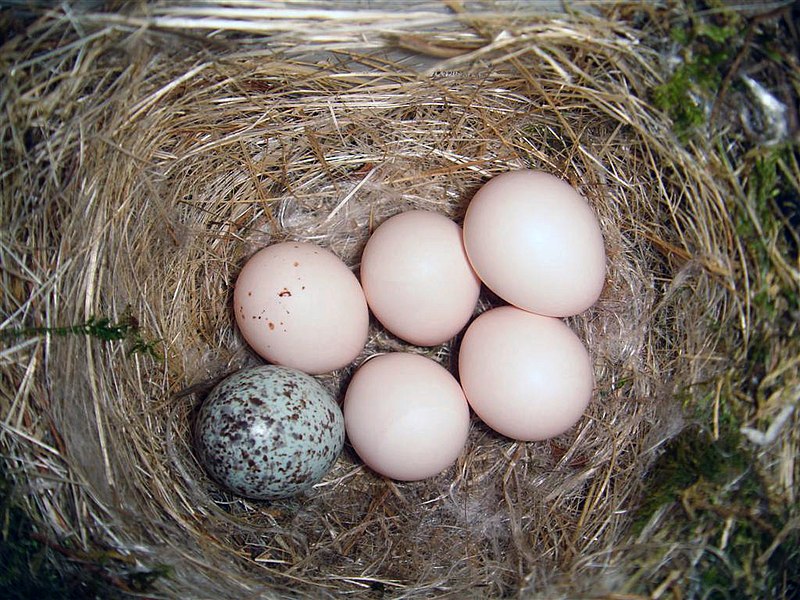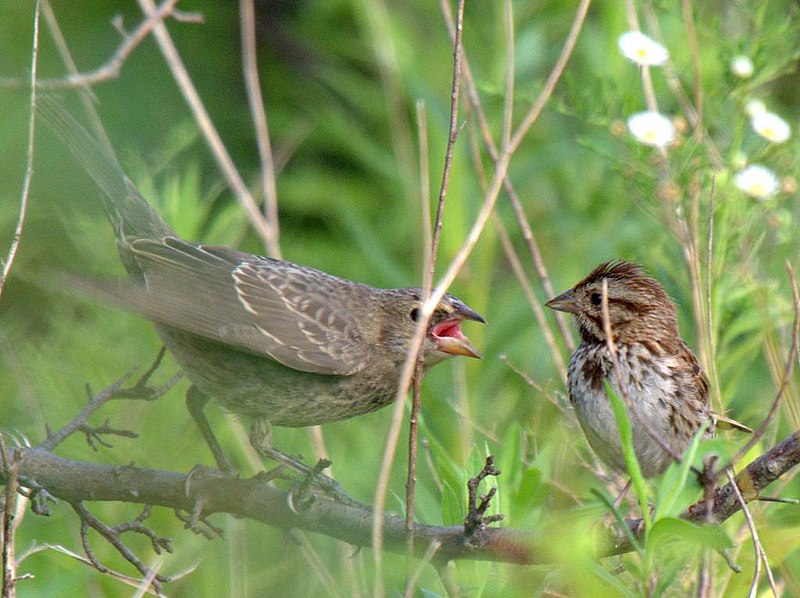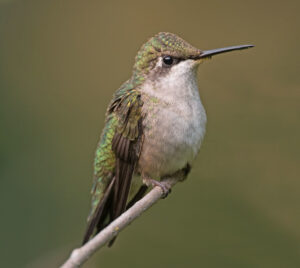By Marissa Hansen
Brood parasitism is nature’s version of free daycare. In this scheme, the parasitic bird lays its eggs in the nest of another bird species, effectively tricking the unsuspecting host into raising its young.1 Imagine dropping your kids off at the neighbors’ house without them knowing and expecting them to feed, clothe, and educate your offspring. The real kicker? The host birds often don’t realize they’re being duped until it’s too late!1
Why is Brood Parasitism Such a Successful Strategy?
Brood parasitism is surprisingly successful for several reasons. First off, it is energy efficient! Raising chicks is exhausting. By outsourcing parental duties, parasitic birds save their energy for more important tasks like finding food, preening their feathers, and laying more eggs in other unsuspecting nests.2 With more free time and energy, these birds can also produce more offspring in a breeding season than their diligent, nest-bound counterparts.2 Many brood parasites have evolved to give their chicks a competitive edge.1 For instance, the eggs of the parasitic bird might hatch sooner, or the chicks might be more aggressive, ensuring they get a larger share of food from their adoptive parents. Survival of the fittest? More like survival of the craftiest!
Alberta's Avian Tricksters
Now, who are the top avian culprits around Alberta?
Brown-Headed Cowbird
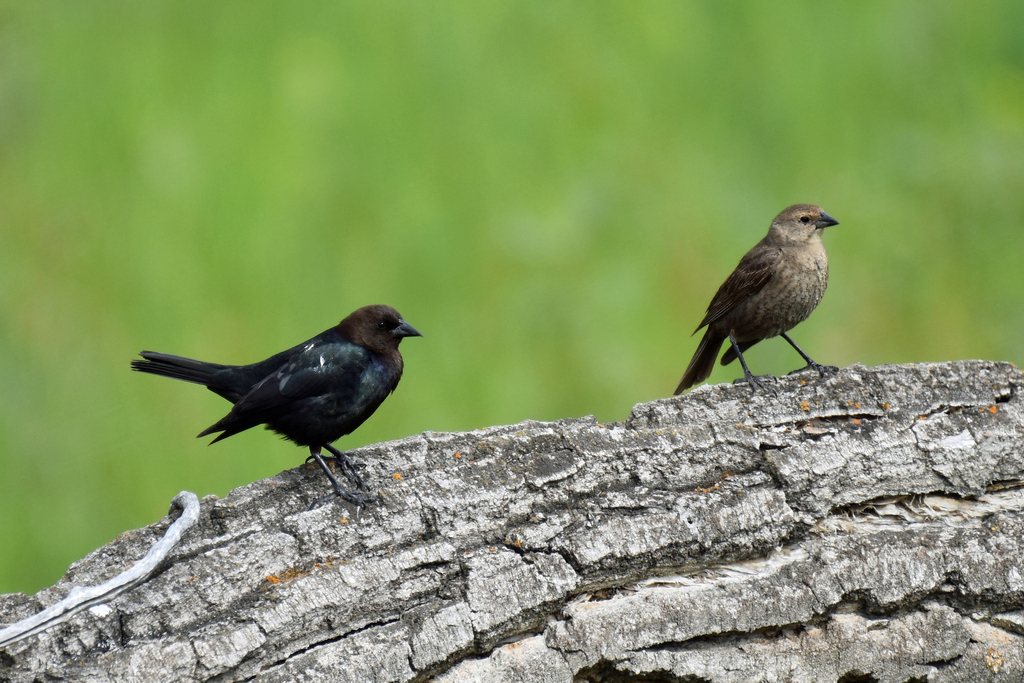
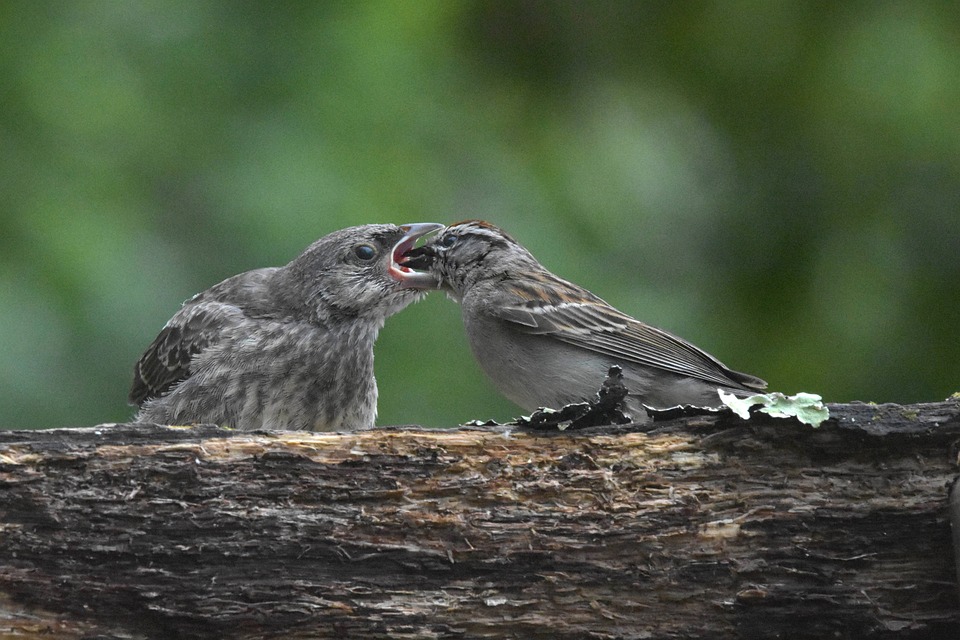
These birds are a well-known example of brood parasitism in Alberta. The Brown-headed cowbird is notorious for laying its eggs in the nests of over 200 different bird species.3 They’re not picky about who they trick, and their young are often the first to hatch, quickly outcompeting the host’s chicks for food.4
Black-billed Cuckoo
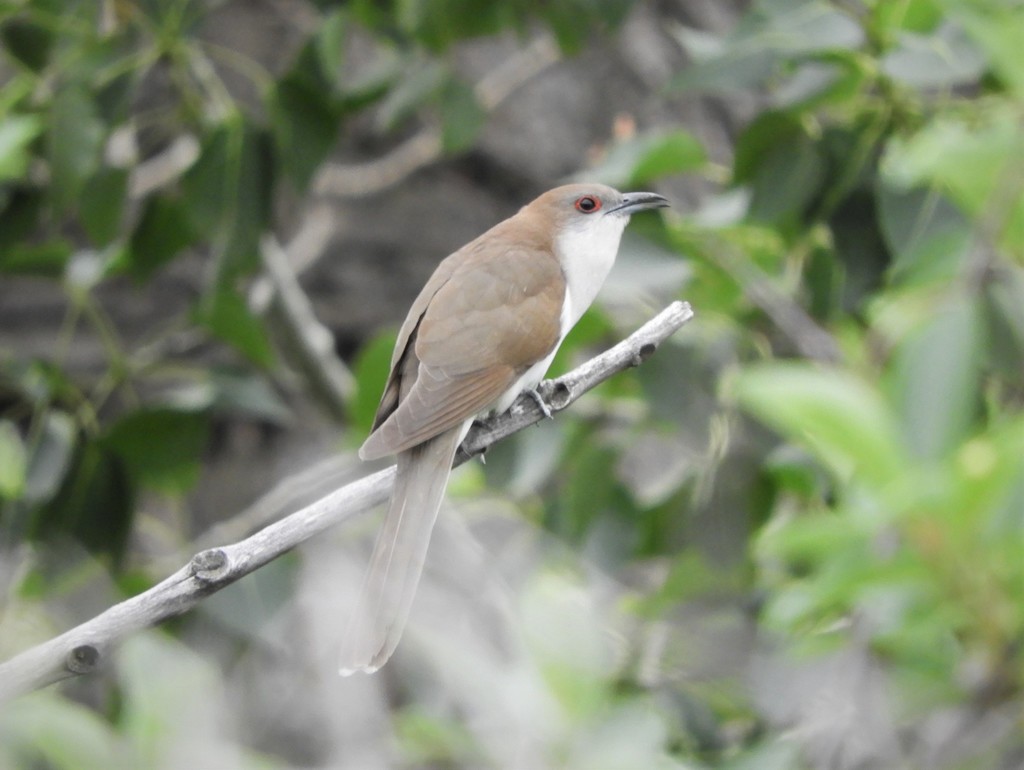
Red-winged Blackbird
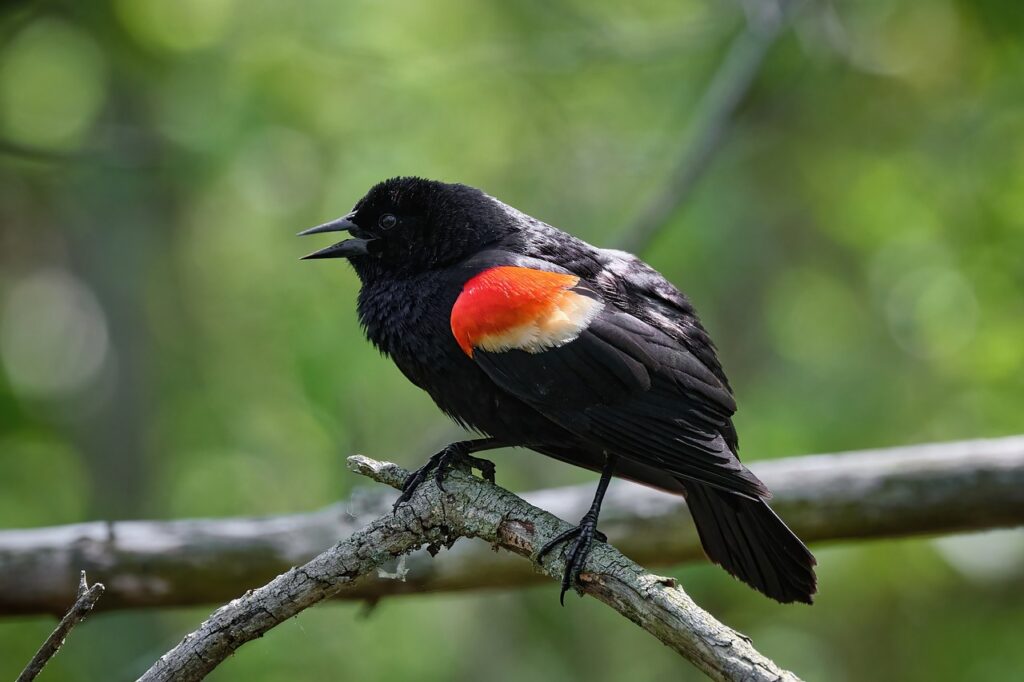
Brood parasitism is one of nature’s most fascinating (and somewhat scandalous) survival strategies. By cleverly outsourcing the demanding task of chick-rearing, parasitic birds like the Brown-headed Cowbird, Common Cuckoo, and occasional rogue Red-winged Blackbird have found a way to maximize their reproductive success while leaving the heavy lifting to others. It’s a bird-nurse-bird world in Alberta, where the art of deception is critical to a bird’s babysitting budget.
References
- What is brood parasitism in birds? RSS. (n.d.). https://www.scienceofbirds.com/blog/what-is-brood-parasitism-in-birds
- Medina, I., Kilner, R. M., & Langmore, N. E. (2020, October). From micro- to macroevolution: Brood parasitism as a driver of phenotypic diversity in birds. Current zoology. https://www.ncbi.nlm.nih.gov/pmc/articles/PMC7705515/
- Brown-headed cowbird overview, all about birds, Cornell Lab of Ornithology. Overview, All About Birds, Cornell Lab of Ornithology. (n.d.-a). https://www.allaboutbirds.org/guide/Brown-headed_Cowbird/overview
- Brown-headed cowbird. Audubon. (2024, May 2). https://www.audubon.org/field-guide/bird/brown-headed-cowbird
- Black-billed Cuckoo. Birds of the World, Cornell Lab of Ornithology.(2020). https://birdsoftheworld.org/bow/species/bkbcuc/cur/introduction
- Iqbal, M. (n.d.). Cuculus Canorus (common cuckoo). Animal Diversity Web. https://animaldiversity.org/accounts/Cuculus_canorus/
- Red-winged blackbird overview, all about birds, Cornell Lab of Ornithology. Overview, All About Birds, Cornell Lab of Ornithology. (n.d.). https://www.allaboutbirds.org/guide/Red-winged_Blackbird/overview

